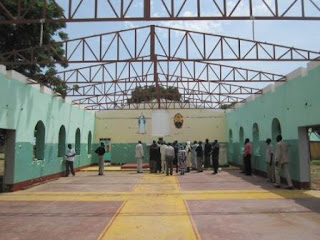We had travelled to Abyei in January of 2011 because we were interested in seeing how the town of Abyei was returning to life after it was destroyed by soldiers of Sudan in 2008 & 2009. Also, we wanted to see the plight of the thousands of people who had returned to South Sudan from the north and had resettled in the Abyei area.
What we found in 2011 was a town that was rebuilding but which faced great difficulties in terms of security and resources. The returnees in particular were struggling, people who were largely dumped in make-shift camps located miles from the town in places without clean water or food. The returnees were trying to build shelters and re-establish their lives in a place to which they were tied by history and family but in many cases not by any experience.
In May of 2011 northern soldiers again invaded Abyei. The UN soldiers who promised to protect the civillians, part of their mandate, fled at the first shots leaving the civillians to the invaders according to refugees we interviewed. According to UN figures, over 100,000 people fled Abyei. Most of the people, Ngok Dinka tribespeople mostly, fled southwards towards the town of Agok. Agok has been overrun with refugees who have struggled to build shelter and find a means to support themselves. When we visited in 2011, the ECS primary school was hosting 1200-children with about 12-teachers. Now, with the influx of refugees from Abyei, the school has around 4200+ students with 32-teachers. Most children sit on the ground all day under trees to learn, while their families live four or five familes to a small makeshift shelter.
After they captured Abyei the northern soldiers and their allies the Arab-Misseriya tribespeople who bring their cattle into the Abyei area to graze during the dry season went on a frenzy of looting and destruction of the town.
What we saw of Abyei town on this visit reminded me of the photos of Hiroshima after the atomic blasts at the end of the second World War. There were streets and a few straggling survivors, but everything else was destroyed. Every shop, every tukel and school and office, even the churches - except for the mosque - was destroyed. The buildings built of local materials were all burned, the permanent buildings had their doors and windows and roofing materials removed. We visited the local power generating station and found the two large generators burned and destroyed. Citizens who had fled southwards to the town of Agok told of how the northerners put rocks and debris down the bore wells so they could no longer be used, and especially cruel act.
I found the experience particularly unsettling because I remember vividly the town we visited in 2011, and I could hardly believe the scope of the destruction I saw on this visit. I have never visited a war zone before and was unprepared for the level of destruction I experienced. Even the house we stayed at in 2011 was destroyed without a trace.
I will be writing more of our visit to Abyei, but I wanted to share some photos from 2011 and now so people can see the destruction that has occurred. I also ask for people to pray for the people of Abyei and for a peaceful resolution to the crisis there.
 |
| Archbishop Daniel Deng (L) and Bishop Abraham Nhial (R) meeting the Abyei County Commissioner in Jan 2011 |
 |
| Abyei town Dept of Social Services, Oct 2012 showing destruction |
 |
| Abyei town, Jan 2011 showing residents rebuilding homes, note presence of power lines. |
 |
| Abyei Town, Jan 2011 showing rebuilding |
 |
| Abyei Town, Oct 2012, homes abandoned or destroyed Abyei town, Oct 2012: Abandoned homes, even the electric wires removed from the poles. |
 |
| The same location, October 2012 |
 |
| LR Duffee at ECS Primary School, Abyei, Jan 2011 |
 |
| LR Duffee at same ECS Primary school classroom, October 2012 |
 |
| Abyei Roman Catholic Church, Oct 2012: roof missing, fixtures removed |











It is sad how cruel people can be. Abyei looks totally uninhabitable now.
ReplyDelete